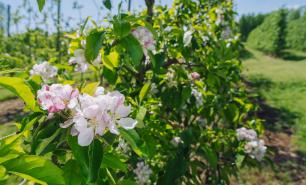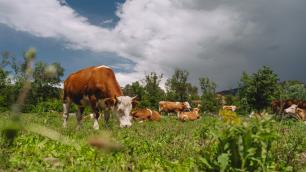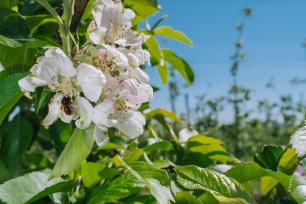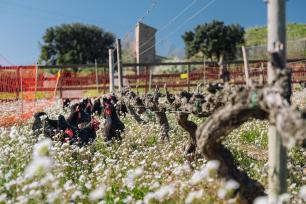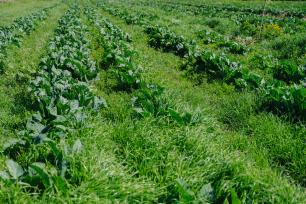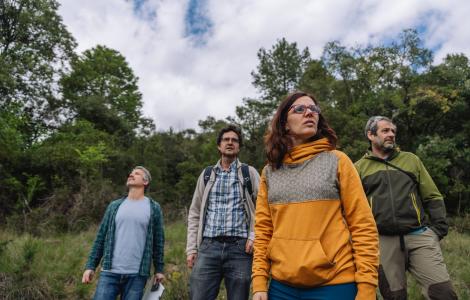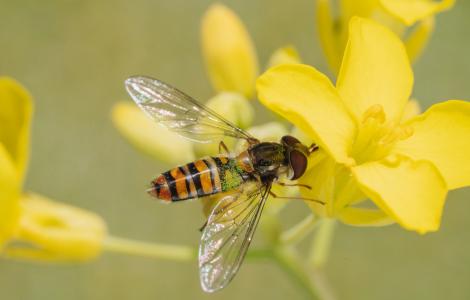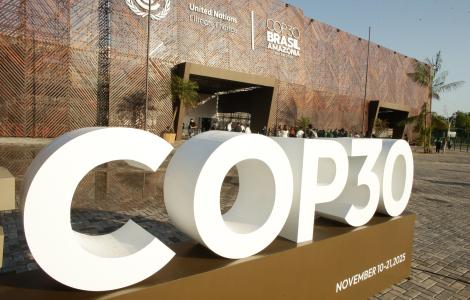Each of the four farms has its own specific practices and produces different foods. Chickens, hens and grass-fed cows are raised on the Planeses farm (Sant Ferriol, Girona), which also has a vegetable garden and uses woodland resources to make biofertilizers. Família Torres (Pacs del Penedès, Barcelona), a family-run winery, brings in flocks of sheep to graze among its vines and has installed nesting boxes for bats and birds. The PomonaFruits farm (Ivars d’Urgell, Lleida), where apples, pears, apricots and peaches are produced, incorporates pruning litter, live microorganisms, and organic matter into its soil. It plants flowers on the edges of cultivated areas, has introduced Osmia bees (solitary bees) to help pollinate fruit trees, and uses donkeys in some plots to fertilize the land and control weeds, thus reducing the use of machinery. Last but not least, Verdcamp Fruits (Cambrils, Tarragona) produces a wide variety of fruits and vegetables and is notable for a practice it calls floral intercropping (planting flowers between crops to promote biodiversity). The farm also uses a crop roller to bend and flatten crops growing alongside weeds, once their productive cycle ends, without cutting or shredding them; this creates a layer of biomass on the soil which acts as a natural mulch and green manure, retaining moisture. Additionally, all the farms have installed bee hotels to encourage the presence of pollinators.
Scheduled to run until January 2026, the Regenera.cat project is continuing its efforts to scientifically quantify the benefits of regenerative agriculture. “We’re now measuring other parameters, such as carbon and water footprints, the nutritional quality of the food produced, pollinator diversity, and water and atmospheric carbon storage capacity,” Retana concludes.
In the coming months, the project’s farms will hold open days so that members of the public can visit them and find out about their implementation of regenerative practices. Sign up for the Regenera.cat newsletter to keep abreast of all the project’s latest developments.





